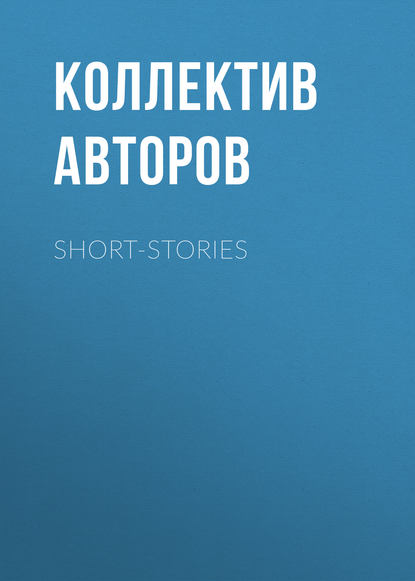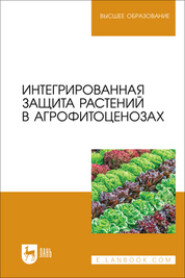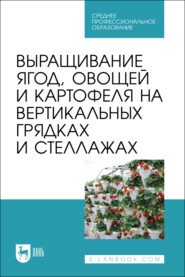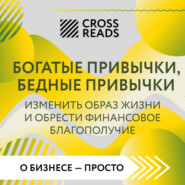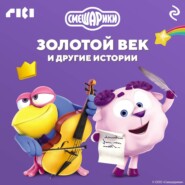По всем вопросам обращайтесь на: info@litportal.ru
(©) 2003-2024.
✖
Short-Stories
Настройки чтения
Размер шрифта
Высота строк
Поля
"53305))6*;4826)4.);806*;488 ś60))85;1(;:*883(88)5*;46(;88*96 ?;8)*(;485);5*2:*(;4956*2(5* – 4)8 ś8*;4069285);)68)4;1(9;48081;8:8 1;4885;4)485528806*81(9;48;(88;4 (?34;48)4;161;:188;?;"
"But," said I, returning him the slip, "I am as much in the dark as ever. Were all the jewels of Golconda[81 - 138:19 Golconda. A town in India noted for its diamond market.] awaiting me on my solution of this enigma, I am quite sure that I should be unable to earn them."
"And yet," said Legrand, "the solution is by no means so difficult as you might be led to imagine from the first hasty inspection of the characters. These characters, as any one might readily guess, form a cipher, that is to say, they convey a meaning; but then, from what is known of Kidd, I could not suppose him capable of constructing any of the more abstruse cryptographs[82 - 138:28 cryptographs. Secret forms of writing.]. I made up my mind, at once, that this was of a simple species – such, however, as would appear, to the crude intellect of the sailor, absolutely insoluble without the key."
"And you really solved it?"
"Readily; I have solved others of an abstruseness ten thousand times greater. Circumstances, and a certain bias of mind, have led me to take interest in such riddles, and it may well be doubted whether human ingenuity can construct an enigma of the kind which human ingenuity may not, by proper application, resolve. In fact, having once established connected and legible characters, I scarcely gave a thought to the mere difficulty of developing their import.
"In the present case – indeed, in all cases of secret writing – the first question regards the language of the cipher; for the principles of solution, so far especially as the more simple ciphers are concerned, depend upon, and are varied by, the genius of the particular idiom. In general, there is no alternative but experiment (directed by probabilities) of every tongue known to him who attempts the solution, until the true one be attained. But, with the cipher now before us, all difficulty was removed by the signature. The pun upon the word 'Kidd' is appreciable in no other language than the English. But for this consideration I should have begun my attempts with the Spanish and French, as the tongues in which a secret of this kind would most naturally have been written by a pirate of the Spanish main[83 - 139:27 Spanish main. The northeastern portion of South America, the Caribbean Sea, and the coast of North America to the Carolinas were harassed by the Spaniards.]. As it was, I assume the cryptograph to be English.
"You observe there are no divisions between the words. Had there been divisions, the task would have been comparatively easy. In such case I would have commenced with a collation and analysis of the shorter words; and had a word of a single letter occurred, as is most likely (a or I, for example), I should have considered the solution as assured. But there being no divisions, my first step was to ascertain the predominant letters, as well as the least frequent,
"Counting all, I constructed a table thus; —
Of the character 8 there are 33.
; " 26.
4 4 " 19.
) " 16.
* " 13.
5 5 " 12.
6 6 " 11.
1 1 " 8.
0 0 " 6.
92 92 " 5.
:3 " 4.
? " 3.
ś " 2.
– . " 1.
"Now, in English, the letter which most frequently occurs is e. Afterwards, the succession runs thus: a o i d h n r s t u y c f g l m w b k p q x z. E predominates, however, so remarkably that an individual sentence of any length is rarely seen in which it is not the prevailing character.
"Here, then, we have, in the very beginning, the groundwork for something more than a mere guess. The general use which may be made of the table is obvious – but in this particular cipher we shall only very partially require its aid. As our predominant character is 8, we will commence by assuming it as the e of the natural alphabet. To verify the supposition, let us observe if the 8 be seen often in couples – for e is doubled with great frequency in English – in such words, for example, as 'meet,' 'fleet,' 'speed,' 'seen,' 'been,' 'agree,' etc. In the present instance we see it doubled no less than five times, although the cryptograph is brief.
"Let us assume 8, then, as e. Now of all words in the language, 'the' is most usual; let us see, therefore, whether there are not repetitions of any three characters, in the same order of collocation, the last of them being 8. If we discover repetitions of such letters, so arranged, they will most probably represent the word 'the.' Upon inspection, we find no less than seven such arrangements, the characters being ;48. We may, therefore, assume that the semicolon represents t, that 4 represents h, and that 8 represents e– the last being now well confirmed. Thus a great step has been taken.
"But, having established a single word, we are enabled to establish a vastly important point; that is to say, several commencements and terminations of other words. Let us refer, for example, to the last instance but one, in which the combination ;48 occurs – not far from the end of the cipher. We know that the semicolon immediately ensuing is the commencement of a word, and, of the six characters succeeding this 'the,' we are cognizant of no less than five. Let us set these characters down, thus, by the letters we know them to represent, leaving a space for the unknown —
t eeth.
"Here we are enabled, at once, to discard the 'th,' as forming no portion of the word commencing with the first t; since by experiment of the entire alphabet for a letter adapted to the vacancy, we perceive that no word can be formed of which this th can be a part. We are thus narrowed into
t ee,
and, going through the alphabet, if necessary, as before, we arrive at the word 'tree,' as the sole possible reading. We thus gain another letter, r, represented by (, with the words 'the tree" in juxtaposition.
"Looking beyond these words, for a short distance, we again see the combination ;48, and employ it by way of termination to what immediately precedes. We have thus this arrangement:
the tree ;4 (?34 the,
or, substituting the natural letters, whereknown, it reads thus:
the tree thr?3h the.
"Now, if, in place of the unknown characters, we leave blank spaces, or substitute dots, we read thus:
the tree thr…h the,
when the word 'through' makes itself evident at once. But the discovery gives us three new letters, o, u, and g, represented by? and 3.
"Looking now, narrowly, through the cipher for combinations of known, characters, we find, not very far from the beginning, this arrangement.
83(88, or, egree,
which, plainly, is the conclusion of the word 'degree' and gives us another letter, d, represented by .
"Four letters beyond the word 'degree,' we perceive the combination.
;46(;88*.
"Translating the known characters, and representing the unknown by dots, as before, we read thus:
th.rtee,
an arrangement immediately suggestive of the word 'thirteen,' and again furnishing us with two new characters, i, and n, represented by 6 and *.
"Referring, now, to the beginning of the cryptograph, we find the combination,
53 .
"Translating, as before, we obtain
.good,
which assures us that the first letter is A, and that the first two words are 'A good.'
"But," said I, returning him the slip, "I am as much in the dark as ever. Were all the jewels of Golconda[81 - 138:19 Golconda. A town in India noted for its diamond market.] awaiting me on my solution of this enigma, I am quite sure that I should be unable to earn them."
"And yet," said Legrand, "the solution is by no means so difficult as you might be led to imagine from the first hasty inspection of the characters. These characters, as any one might readily guess, form a cipher, that is to say, they convey a meaning; but then, from what is known of Kidd, I could not suppose him capable of constructing any of the more abstruse cryptographs[82 - 138:28 cryptographs. Secret forms of writing.]. I made up my mind, at once, that this was of a simple species – such, however, as would appear, to the crude intellect of the sailor, absolutely insoluble without the key."
"And you really solved it?"
"Readily; I have solved others of an abstruseness ten thousand times greater. Circumstances, and a certain bias of mind, have led me to take interest in such riddles, and it may well be doubted whether human ingenuity can construct an enigma of the kind which human ingenuity may not, by proper application, resolve. In fact, having once established connected and legible characters, I scarcely gave a thought to the mere difficulty of developing their import.
"In the present case – indeed, in all cases of secret writing – the first question regards the language of the cipher; for the principles of solution, so far especially as the more simple ciphers are concerned, depend upon, and are varied by, the genius of the particular idiom. In general, there is no alternative but experiment (directed by probabilities) of every tongue known to him who attempts the solution, until the true one be attained. But, with the cipher now before us, all difficulty was removed by the signature. The pun upon the word 'Kidd' is appreciable in no other language than the English. But for this consideration I should have begun my attempts with the Spanish and French, as the tongues in which a secret of this kind would most naturally have been written by a pirate of the Spanish main[83 - 139:27 Spanish main. The northeastern portion of South America, the Caribbean Sea, and the coast of North America to the Carolinas were harassed by the Spaniards.]. As it was, I assume the cryptograph to be English.
"You observe there are no divisions between the words. Had there been divisions, the task would have been comparatively easy. In such case I would have commenced with a collation and analysis of the shorter words; and had a word of a single letter occurred, as is most likely (a or I, for example), I should have considered the solution as assured. But there being no divisions, my first step was to ascertain the predominant letters, as well as the least frequent,
"Counting all, I constructed a table thus; —
Of the character 8 there are 33.
; " 26.
4 4 " 19.
) " 16.
* " 13.
5 5 " 12.
6 6 " 11.
1 1 " 8.
0 0 " 6.
92 92 " 5.
:3 " 4.
? " 3.
ś " 2.
– . " 1.
"Now, in English, the letter which most frequently occurs is e. Afterwards, the succession runs thus: a o i d h n r s t u y c f g l m w b k p q x z. E predominates, however, so remarkably that an individual sentence of any length is rarely seen in which it is not the prevailing character.
"Here, then, we have, in the very beginning, the groundwork for something more than a mere guess. The general use which may be made of the table is obvious – but in this particular cipher we shall only very partially require its aid. As our predominant character is 8, we will commence by assuming it as the e of the natural alphabet. To verify the supposition, let us observe if the 8 be seen often in couples – for e is doubled with great frequency in English – in such words, for example, as 'meet,' 'fleet,' 'speed,' 'seen,' 'been,' 'agree,' etc. In the present instance we see it doubled no less than five times, although the cryptograph is brief.
"Let us assume 8, then, as e. Now of all words in the language, 'the' is most usual; let us see, therefore, whether there are not repetitions of any three characters, in the same order of collocation, the last of them being 8. If we discover repetitions of such letters, so arranged, they will most probably represent the word 'the.' Upon inspection, we find no less than seven such arrangements, the characters being ;48. We may, therefore, assume that the semicolon represents t, that 4 represents h, and that 8 represents e– the last being now well confirmed. Thus a great step has been taken.
"But, having established a single word, we are enabled to establish a vastly important point; that is to say, several commencements and terminations of other words. Let us refer, for example, to the last instance but one, in which the combination ;48 occurs – not far from the end of the cipher. We know that the semicolon immediately ensuing is the commencement of a word, and, of the six characters succeeding this 'the,' we are cognizant of no less than five. Let us set these characters down, thus, by the letters we know them to represent, leaving a space for the unknown —
t eeth.
"Here we are enabled, at once, to discard the 'th,' as forming no portion of the word commencing with the first t; since by experiment of the entire alphabet for a letter adapted to the vacancy, we perceive that no word can be formed of which this th can be a part. We are thus narrowed into
t ee,
and, going through the alphabet, if necessary, as before, we arrive at the word 'tree,' as the sole possible reading. We thus gain another letter, r, represented by (, with the words 'the tree" in juxtaposition.
"Looking beyond these words, for a short distance, we again see the combination ;48, and employ it by way of termination to what immediately precedes. We have thus this arrangement:
the tree ;4 (?34 the,
or, substituting the natural letters, whereknown, it reads thus:
the tree thr?3h the.
"Now, if, in place of the unknown characters, we leave blank spaces, or substitute dots, we read thus:
the tree thr…h the,
when the word 'through' makes itself evident at once. But the discovery gives us three new letters, o, u, and g, represented by? and 3.
"Looking now, narrowly, through the cipher for combinations of known, characters, we find, not very far from the beginning, this arrangement.
83(88, or, egree,
which, plainly, is the conclusion of the word 'degree' and gives us another letter, d, represented by .
"Four letters beyond the word 'degree,' we perceive the combination.
;46(;88*.
"Translating the known characters, and representing the unknown by dots, as before, we read thus:
th.rtee,
an arrangement immediately suggestive of the word 'thirteen,' and again furnishing us with two new characters, i, and n, represented by 6 and *.
"Referring, now, to the beginning of the cryptograph, we find the combination,
53 .
"Translating, as before, we obtain
.good,
which assures us that the first letter is A, and that the first two words are 'A good.'





